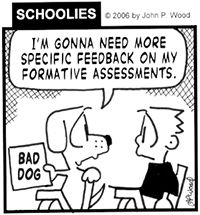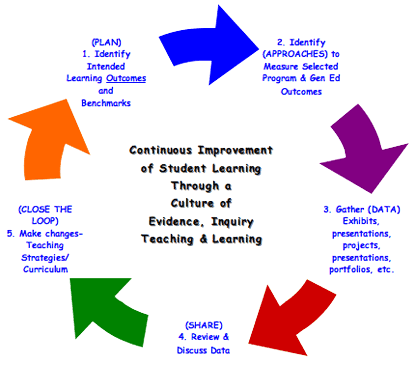Module 3: Principles of assessment
OBJECTIVES
- Understand the difference between formative and summative assessment and how this is conducted in the practice setting
- To understand how to apply learning objectives during clinical placement
Assessment

The National Clinical Competency Resource (Health Workforce Australia, 2014) identifies activity into three separate domains which are Clinical Supervision Safety and Quality in clinical supervision; and organization. Assessment falls within the Clinical Supervision domain and most students require some form of assessment during their clinical placement. In a balanced assessment both summative and formative assessments are required to provide a broad understanding of student capability.
Formative assessment refers to the information that is received from multiple sources for example, by clinical supervisors /preceptors performing activities with students during clinical placement. This provides multiple sources of information that when discussed with the student, help direct student learning on a day to day basis.
Summative assessment is the overall or final assessment of student capability, for example the final assessment completed at the end of student placement. This is a ‘summary’ of the student activity and should include the formative assessment collected during placement (Graduate Students, 2018). More information
Formative assessment should be closely aligned with feedback so that students are provided with the opportunity to direct their own learning and development. Students should be given the opportunity to reflect upon assessment and construct a plan to enhance their practice accordingly. The supervisor / preceptor is pivotal to this process as they guide the student to self-correct and engage with their learning process. When managed well, this process motivates the student and augments lifelong positive learning experiences (Catherine Garrison, 2018).
A component of assessment is the setting of realistic and informed learning objectives. The clinical supervisor / preceptor and student must set these very early in the clinical placement so there are clear and transparent pathways to improve student learning. It involves making your expectations clear to students and setting appropriate outcomes for learning. Formative assessment can be used to determine how well student performance matches learning outcomes. The learning objectives should be student centered, break down the task and focus on specific cognitive processes (Carnegie Mellon University, 2016).
How to set learning objectives
Learning objectives need to be specific, measurable and realistic. They should outline where the student should be positioned at the completion of training. The following diagram outlines the steps that a supervisor / preceptor undertakes when interacting with a learner. It allows continuous improvement of learning processes.

Competency Standards and Standards for Practice
Most professions have national competency standards or standards for practice that are the benchmark against which performance is assessed. These exist to ensure a minimum professional standard that ultimately protects consumers of healthcare services. Student performance should be situated along the practice continuum with the objective of being positioned at the beginning level practitioner competency level on completion of training. Clinical placement assessments are instrumental in arriving at this point.
For individual competency standards, please refer to your professional body – here are some examples
http://www.nursingmidwiferyboard.gov.au/Codes-Guidelines-Statements/Professional-standards.aspx
http://www.pharmacyboard.gov.au/Registration-Standards.aspx
http://www.physiotherapyboard.gov.au/Registration-Standards.aspx
ACTIVITY: Watch these short video clips below from “YOUTUBE” and reflect upon your learning.
YOUTUBE CLIP: FORMATIVE AND SUMMATIVE ASSESSMENT
Duration: 4.49 minutes
Rick Wormeli who is an American educational consultant and author, speaks about how to use assessment to get the best out of student learning. This is constructed around education not health but the concepts are parallel.
REFLECTIVE EXERCISE: Can you relate this information to the clinical setting? Reflect upon the links between feedback and formative assessment and how this may further inform your practice.
